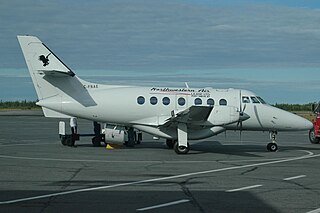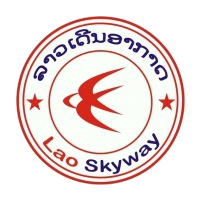
The Pratt & Whitney Canada PT6 is a turboprop aircraft engine produced by Pratt & Whitney Canada. Its design was started in 1958, it first ran in February 1960, first flew on 30 May 1961, entered service in 1964, and has been continuously updated since. The PT6 consists of two basic sections: a gas generator with accessory gearbox, and a free-power turbine with reduction gearbox. In aircraft, the engine is often mounted "backwards," with the intake at the rear and the exhaust at the front, so that the turbine is directly connected to the propeller. Many variants of the PT6 have been produced, not only as turboprops but also as turboshaft engines for helicopters, land vehicles, hovercraft, and boats; as auxiliary power units; and for industrial uses. By November 2015, 51,000 had been produced, which had logged 400 million flight hours from 1963 to 2016. It is known for its reliability, with an in-flight shutdown rate of 1 per 651,126 hours in 2016. The PT6A turboprop engine covers the power range between 580 and 1,940 shp, while the PT6B/C are turboshaft variants for helicopters.

Air Djibouti, also known as Red Sea Airlines, is the flag carrier of Djibouti. It first flew in 1963 and ceased all operations in 2002. In 2015, the airline was relaunched, first as a cargo airline and then, in 2016, with passenger services as well. It is headquartered in the capital, Djibouti.
Isleña de Inversiones S.A. de C.V. branded Avianca Honduras was a regional airline based in San Pedro Sula, Honduras. It offered mostly scheduled and chartered passenger flights out of its hub at Ramón Villeda Morales International Airport. It was one of the most successful airlines in the country and in the Central American region, as it was part of Grupo TACA. It was one of the seven nationally branded airlines in the Avianca Group of Latin American airlines.

Icaro Air was an airline based in Quito, Ecuador. Its main base was Mariscal Sucre International Airport, Quito.

DAP is a Chilean airline that operates charter and scheduled flights, with its base in Punta Arenas, Chile. The DAP group is a consortium formed by Aerovías DAP, AeroRescate, Antarctic Airways, DAP Antarctica, DAP Helicópteros and Mineral Airways.
Bering Air is an American airline headquartered in Nome, Alaska, United States. It operates domestic scheduled passenger and charter airline services, as well as air ambulance and helicopter services. Its main base is Nome Airport, with hubs at Ralph Wien Memorial Airport (Kotzebue) and Unalakleet Airport.

Northwestern Air is an airline based in Fort Smith, Northwest Territories, Canada. It operates scheduled passenger services to seven destinations in two territories/provinces, as well as undertaking ad hoc charters and long-term charter contracts for various corporations throughout Canada and the United States.
China Flying Dragon Aviation is an airline based in Harbin, Heilongjiang, China. It operates short-haul passenger and cargo charter flights, as well as maritime surveillance, aerial photography and forestry protection services. Its main base is Harbin Taiping International Airport.
MarkAir was a regional airline based in Anchorage, Alaska, that became a national air carrier operating passenger jet service in the United States with a hub and corporate headquarters located in Denver, Colorado. After a second bankruptcy in 1995, it ceased operations in October and was later liquidated.
SonAir Airline Services, S.A., commonly known as SonAir was established as DAR on 10 October 1979, is a venture of the Angolan national petroleum company Sonangol Group.
Evergreen International Aviation, Inc. was a global aviation services company based in McMinnville, Oregon, United States. Founded in 1960, Evergreen was primarily known publicly for commercial helicopter operations in agricultural and forestry applications.

Lamb Air Ltd. was a Canadian airline that began operations in 1934 in The Pas, Manitoba, and went out of business in 1981.

Pel-Air Aviation Pty Ltd is an airline based in Mascot, Sydney, Australia. It is a wholly owned subsidiary of Regional Express Holdings, which also owns Australian airline Rex Airlines.

Northern Thunderbird Air Inc or NT Air is a Canadian charter airline and medevac service based in Prince George, British Columbia.

TALAIR was a Papua New Guinea airline founded in 1952. It ceased operations in 1993.

The Sri Lanka Air Force Museum is the museum of the Sri Lanka Air Force, and its predecessor, the Royal Ceylon Air Force. Open to the public, the museum is at the SLAF Ratmalana and is maintained by the Sri Lanka Air Force.

Lao Skyway, formerly known as Lao Air, is a private airline with its headquarters at Wattay Airport in Vientiane, Laos. It operates scheduled and charter services to airports in Laos.
Pan Am Flight 103 was a flight that was destroyed in 1988 by a terrorist bomb, killing all 259 people on board, plus 11 on the ground.
Era Aviation was a fixed wing airline as well as a commercial helicopter operation based in Anchorage, Alaska, United States. It operated a network of scheduled fixed wing passenger services from Anchorage as well as from Bethel, AK on behalf of Alaska Airlines via a code sharing agreement. Its main base was located at the Ted Stevens Anchorage International Airport (ANC). Era Aviation has since been renamed Corvus Airlines who currently do business as Ravn Alaska. The company slogan was FlySmart. FlyEra.










